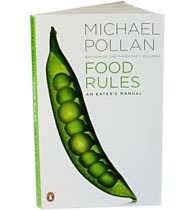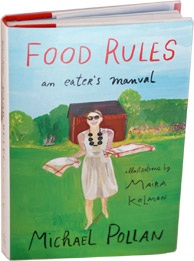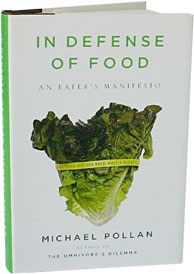 Consider this essay as “Garbage Disposal Behavior, Part Deux.” In that essay, I cautioned against eating those last few leftovers rather than throwing them away or putting them away. Now I want to shift the question– rather than “Should I take this last bite?” I want you to ask yourself, “Should I take this first bite?”
Consider this essay as “Garbage Disposal Behavior, Part Deux.” In that essay, I cautioned against eating those last few leftovers rather than throwing them away or putting them away. Now I want to shift the question– rather than “Should I take this last bite?” I want you to ask yourself, “Should I take this first bite?”
If you are a fully grown adult in reasonably good health, and you are not currently training for a marathon or attempting to build muscle mass for another athletic endeavor, your nutritional needs are pretty limited, especially when it comes to protein. Once you have covered some minimal metabolic levels of essential amino acids and electrolytes, your body is just looking for energy, and for that it wants carbohydrates and fats. Consider that people are sometimes kept alive for years on intravenous feeding, and the typical “recipe” for that diet is a portion of amino acids, an equal or larger portion of fats, and a triple portion (or more) of sugar. (If you’re interested in this topic, search for “parenteral nutrition,” but if you don’t have a science background, your eyes are going to glaze over pretty fast.)
Does this mean I’m advocating a diet of 100% ice cream sundaes? Of course not. If you even think you could eat nothing but ice cream, try it. I’m betting you don’t make it 48 hours before you’re craving a salad like you never have before. Your body, and even your taste buds, are smarter than you think. But beyond our basic metabolic needs, there isn’t really inherently good food and bad food. There’s just food. So maybe it’s time to rethink our relationship with that food.
Eating As a Sensual Pleasure
Many health professionals would like to get us to think about eating only to fuel our bodies, but they’re going to have about as much success as trying to get people to think about having sex only to make babies. The truth is that we eat for pleasure. Unfortunately, a lot of us are doing both, eating what we think we should eat AND eating what we want to eat. You just don’t have the calories to spare for both. Eating a spinach salad does not cancel out the Snickers bar, it just adds on (and if you had the hard-cooked eggs and bacon dressing on the salad, you were better off with the Snickers bar). Are you eating soggy cereal because you’ve bought that whole “breakfast is the most important meal of the day” malarkey? If it’s so important, why aren’t you eating something you’d enjoy?
Before the first bite goes in your mouth, ask yourself why you are eating it. If the answer is something like, “I’m supposed to,” “It’s good for me,” or “It’s lunch time,” just stop. (The exception here is water, water, water. Nothing in your body runs properly without enough water. Even if you don’t want it, drink it.) If the answer is “I want it,” take a bite. If it isn’t as good as you thought it would be, stop. If it’s fabulous, take another bite. Continue taking bites as long as you can truly say “This is fabulous” while it’s in your mouth. When you can’t any longer, you’ve probably had enough. Stop. And don’t be afraid to spit something out into your napkin, even in public. I do it all the time with candy from unmarked boxes. Why would I go ahead and swallow 90-100 calories’ worth of rum-flavored soft center when I hate it?
You’ll find your portions, especially of very fatty foods, are going to get smaller and smaller. Deep fried goodies are truly only wonderful within a few minutes of coming out of the fat, and they only stay that way while they are piping hot. If the first french fry is great, eat it. If the fifth one is cold and soggy, why would you eat it? You’ll also find that you stop eating fried things that other people have gone out and picked up; the chance of it still being delicious by the time it gets to you is almost nil. Fat, especially saturated fat, is “juicy” when it’s hot and fresh but turns “greasy” very quickly. The same thing will be true of sweet desserts. If the first bite is Heaven, great, but a little may go a long way. If bite #4 is less than the bliss you got on the first bite, let it be your last one.
Rethink Yummy
You’ll also find that the more time you spend thinking about each bite, the more slowly you’ll eat, and the more time your brain will have to tell your stomach you’ve had enough. Are you going to waste a lot of food? Yep, especially until you learn to order based on what you want rather than on what you have customarily been served. But consider it an object lesson. Maybe you need the visual of throwing away plates of food to realize how much you’ve been eating that you neither wanted nor enjoyed.
If you honestly consult your taste buds for the “fabulous” entries and you can only think about desserts, it’s time for some research. Try sushi, hit a tapas restaurant or someplace that will let you put together a plate of appetizer portions and see if there aren’t some little protein gems that you find fabulous. Try interesting canapé recipes. Experiment with new fruits and vegetables, and try a variety of salad dressings until you find one (or more) that makes you love every bite of that salad. (My current favorites are Newman’s Own Light Lime Vinaigrette and Annie’s Naturals Gingerly Vinaigrette; they also make awesome marinades for chicken and pork, respectively.) I happen to like cottage cheese, but when I treat it like dip and eat it with a flavor-packed cracker (my current favorite is Triscuit Cracked Pepper and Olive Oil), I love it.
If you are truly concerned that you are missing nutrients, take a multi-vitamin (it wouldn’t hurt even if you aren’t concerned). If you have any diet-related health concerns, especially diabetic or glycemic problems, of course you have to eat within your doctor’s recommendations. Your doctor will tell you what you can’t have, but be sure to ask what you can have, and you may find a way to work your favorite flavors into the medically-approved plan. Make some new food relationships, and you may just find love after all.










